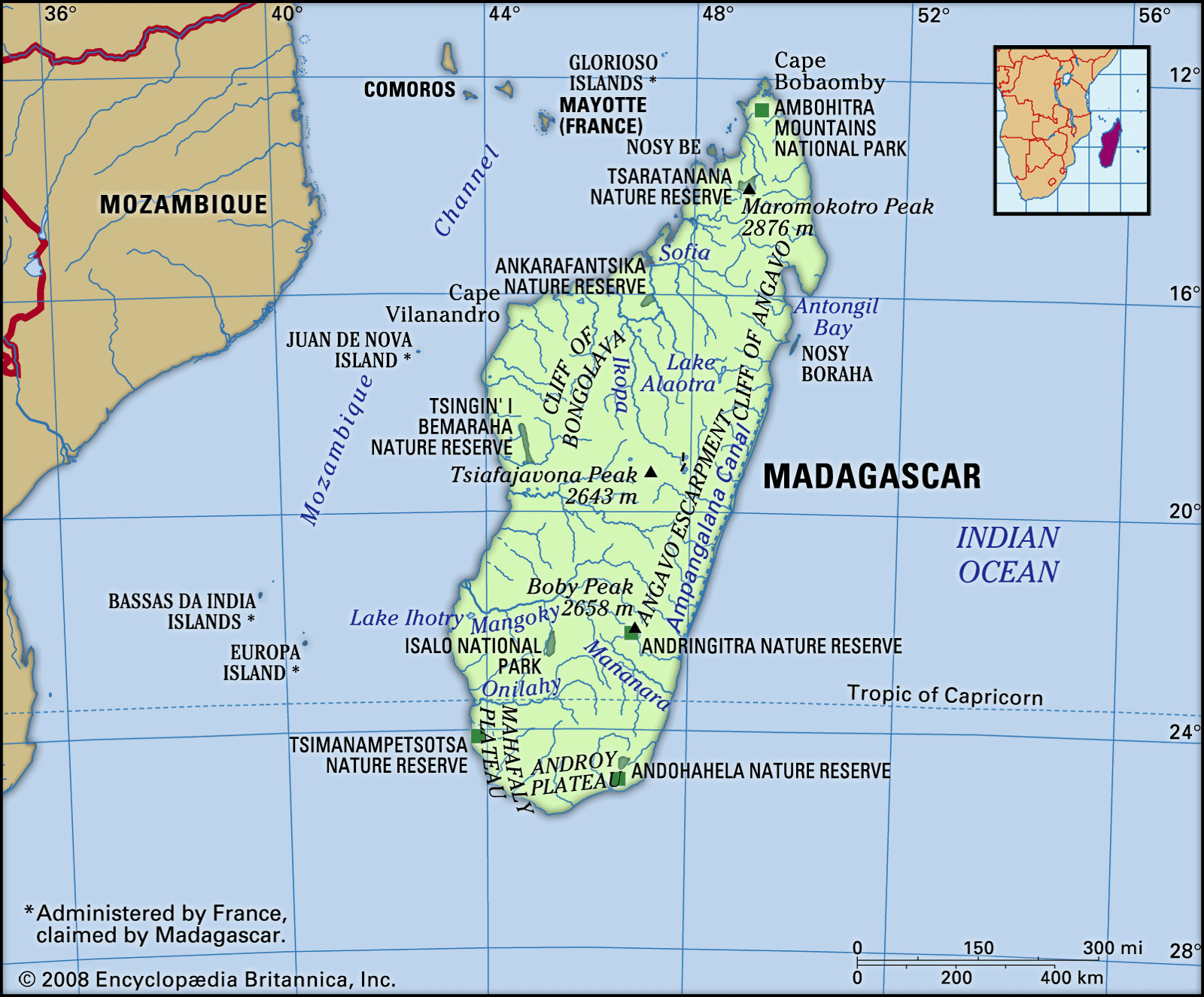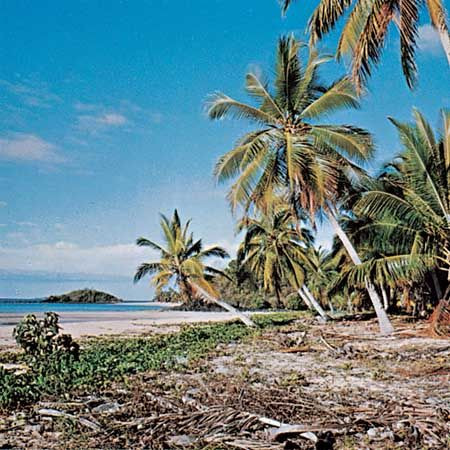 Madagascar Map Highlighting Location
Madagascar Map Highlighting Location
Madagascar, a captivating island nation, graces the southwestern expanse of the Indian Ocean. Its geographical coordinates place it off the southeastern coast of Africa, separated by the expansive Mozambique Channel. This channel, approximately 250 miles (400 km) wide, acts as a significant divider between the island and the African continent, contributing to Madagascar’s unique biodiversity and isolated evolution. Understanding where Madagascar is located geographically is key to appreciating its distinct landscapes and ecological significance.
The Tripartite Land: Central Plateau, Eastern Coast, and Western Zone
Madagascar’s terrain is distinctly characterized by three parallel zones that run longitudinally across the island. These are the elevated central plateau, the slender eastern coastal strip, and the wider zone of low plateaus and plains situated in the west. This tripartite division shapes the island’s climate, drainage, and ecological diversity, making it a land of remarkable geographical contrasts.
The central plateau forms the backbone of Madagascar, rising to elevations between 2,500 and 4,500 feet (800 and 1,400 meters) above sea level. This elevated region has undergone significant geological activity, being uplifted and eroded over millennia, resulting in a westward tilt. Dominating this plateau are impressive massifs exceeding 8,500 feet (2,600 meters) in height. The Tsaratanana Massif, located in the north, stands apart and features Maromokotro, Madagascar’s highest peak at 9,436 feet (2,876 meters). Further south, the Ankaratra Massif, a massive volcanic formation, culminates in Tsiafajavona peak at 8,671 feet (2,643 meters). Ankaratra serves as a crucial watershed, delineating three major river basins, influencing the island’s hydrology and water resources. Continuing southward, the Andringitra Massif, a granite giant, rises to 8,720 feet (2,658 meters) at Boby Peak, located north of Tôlan̈aro (Faradofay), adding to the plateau’s dramatic topography.
The eastern edge of the plateau dramatically descends to the coastal strip, marked by a sharp fault known as the Great Cliff or Cliff of Angavo. This escarpment presents a formidable barrier, with vertical drops of 1,000 to 2,000 feet (300 to 600 meters), often proving impassable. Further east, the Betsimisaraka Escarpment, a lower cliff, overlooks the coastal plain. The plateau’s southern reaches gradually slope towards the southern plain, eventually forming the Mahafaly and Androy plateaus, which terminate in steep coastal cliffs. In contrast, the western descent is more gradual, though still punctuated by imposing escarpments like the Cliff of Bongolava in the west-central region. The northernmost part of the plateau transitions into the lower Ambohitra Mountains, characterized by a series of volcanic craters, adding another layer of geological complexity.
Nosy Be, Madagascar, showcasing a pristine beach, highlighting Madagascar’s coastal beauty and tourism appeal.
The eastern coastal strip, averaging about 30 miles (50 km) in width, is a slender alluvial plain. It is defined by a low-lying coastline interspersed with lagoons, interconnected by the Pangalanes (Ampangalana) Canal, a waterway stretching over 370 miles (600 km). South of Farafangana, the coastline becomes rockier, featuring numerous small bays, while the northeast is marked by the expansive Bay of Antongil (Antongila), a significant geographical feature.
The western zone, ranging from 60 to 125 miles (100 to 200 km) wide, is characterized by sedimentary layers sloping towards the Mozambique Channel, creating a landscape of rolling hills. These hills feature steep inland-facing slopes and gentler slopes towards the sea. The western coastline is notably straight, lined with small dunes and mangrove forests. Currents from the Mozambique Channel have contributed to alluvial deposits and the formation of river deltas along this coast. The northwestern coast is indented with estuaries and bays and is protected by coral reefs and volcanic islands, including Nosy Be (Nossi-Bé), which shelters Ampasindava Bay, demonstrating the varied coastal environments of Madagascar.
Madagascar’s Rivers and Lakes: A Vital Drainage System
Madagascar’s drainage system is largely dictated by its central plateau. The steep eastern face of the plateau is dissected by numerous short, torrential rivers. These include the Mandrare, Mananara, Faraony, Ivondro, and Maningory rivers, which rapidly descend to the coast, emptying into coastal lagoons or directly into the Indian Ocean, often over waterfalls and rapids.
In contrast, the western side of the plateau, with its gentler slope, is traversed by longer and larger rivers. Rivers like the Onilahy, Mangoky, Tsiribihina, and Betsiboka are significant. They carry substantial fertile alluvium westward, depositing it in vast plains and estuaries characterized by multiple channels and numerous sandbanks at their mouths. These river systems are crucial for agriculture and shaping the western landscape.
Madagascar also hosts several lakes, many of which are of volcanic origin, such as Lake Itasy. Lake Alaotra stands as the largest remaining lake on the eastern slope, a remnant of more extensive ancient lake systems. In the south, near Toliara (formerly Tuléar), Lake Tsimanampetsotsa is a large saline lake without an outlet, representing a unique inland water body with distinct ecological characteristics.
Soil Diversity: The Great Red Island’s Foundation
The geological foundation of Madagascar’s central plateau and eastern coast is primarily composed of gneiss, granite, quartz, and other crystalline rock formations. The decomposition of gneiss results in the characteristic red murrum, laterite, and fertile red earths, lending Madagascar its evocative nickname, “The Great Red Island.” These fertile alluvial soils in valleys are highly conducive to intensive agriculture. Scattered volcanic intrusions further enrich the soil fertility, although these soils are also prone to erosion. Lake Alaotra sits within a large sedimentary basin in the central plateau, containing some of the island’s most productive agricultural land. The western third of Madagascar is predominantly composed of sedimentary rock deposits, resulting in soils ranging from medium to low fertility, influencing land use and agricultural potential across the island.
Understanding where Madagascar is located, coupled with its diverse geographical features, provides essential context for appreciating its unique biodiversity, climate patterns, and ecological significance in the Indian Ocean.

 Beach on Nosy Be, Madagascar
Beach on Nosy Be, Madagascar